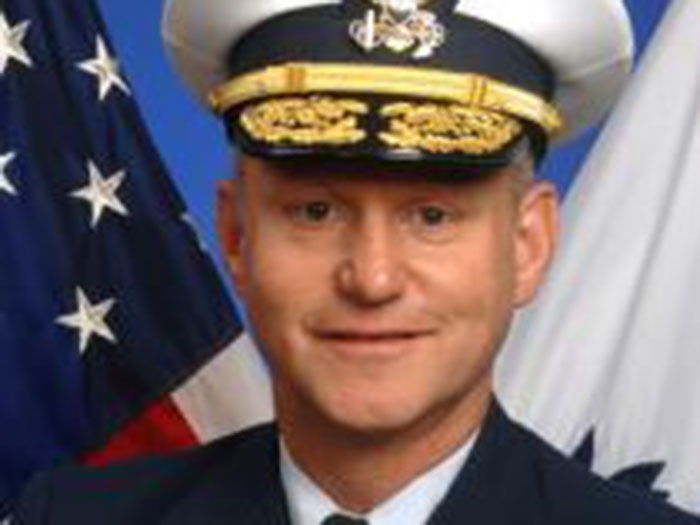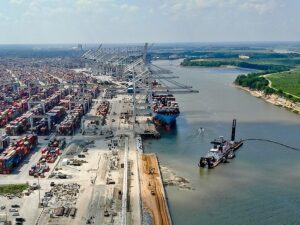
Admiral Paul Thomas blogs on BWMS angst
Written by Nick Blenkey
Rear Adm. Paul Thomas, U.S. Coast Guard Assistant Commandant for Prevention Policy
MAY 18, 2016 — The U.S. insistence on setting its own type approval standards for ballast water management systems has drawn some harsh industry criticism. Rear Adm. Paul Thomas, U.S. Coast Guard Assistant Commandant for Prevention Policy, is holding them up as an example of how to deal with future environmental challenges likely to face shipping.
“It’s no secret; there is a great deal of angst over the International Maritime Organization (IMO) Ballast Water Management (BWM) Convention, the U.S. BWM regulations, and ballast water management system (BWMS) type approval processes,” writes Admiral Thomas in a blog posted on the Coast Guard Maritime Commons site.
“Many in the shipping industry have called for measures to ensure that never again are we put in a position where regulations call for technology that doesn’t yet exist, or type approval requirements that cannot be met by commercially available technology,” writes Admiral Thomas.”however, the very nature of the environmental challenges facing the shipping industry not only precludes the elimination of such dilemmas – it demands them.”
Admiral Thomas writes that though, for a lot of reasons, demand for capacity in global shipping will grow significantly “the sustainability of industry and societal demands will require a reduction in shipping’s environmental footprint.”While industry plays a key role in meeting this challenge, he writes, “so do the regulator, innovator, and non-governmental environmental organizations. Today we see these roles being played out around the ballast water challenge. Future challenges will demand similar roles and approaches, thus making it worthwhile to learn what we can from the ballast water challenge.
“Regulation can provide the critical forcing function that drives innovation and encourages technological developments to meet the environmental challenges. This occurs when regulations set ‘stretch’ goals and incentivize investment to meet those goals. Regulations that embrace the status quo and codify existing commercially-available technology only serve to stifle innovation and prevent industry from meeting environmental challenges. Both the IMO BWM Convention and the U.S. BWM regulations set a discharge standard that represents a stretch goal, and they drive investment and innovation towards the development of solutions that are both effective and practical. Future environmental challenges will require similar regulatory-forcing functions.
“Robust, mandatory, consistent and transparent type approval procedures coupled with testing protocols carried out by independent authorities are critical to ensure the complex systems developed to meet environmental stretch goals are, in fact, reliable and effective. Type approval procedures that are not mandatory, that can be applied inconsistently, and that are not transparent introduce market uncertainty, and make it difficult for regulators to incentivize ‘early adopters.’
“The recent IMO report on the implementation of the ballast water performance standard (G8 standards) bears this out. The report concluded that the non-mandatory nature, inconsistent interpretation and application of the standard, and lack of transparency of the test results have reduced confidence in the credibility of both the G8 approval regime and some of the 50 IMO-approved systems.
“By contrast, there are not yet any BWMS approved to the U.S. type approval standard. But there are many currently being tested. When testing is complete, the results will be transparent, repeatable, reliable and applicable to the full spectrum of ballast water encountered by global shipping. These systems will provide the market certainty that is needed to meet the ballast water challenge in this dynamic, diverse industry. As is the case with future environmental challenges, the success of the global ballast water regime depends on the development of reliable and effective BWMS. This outcome can only be achieved through robust type approval standards.
“Regulations that set stretch goals and demand robust type approval requirements to drive innovation and investment must also provide flexibility to ensure the right balance between the possible and the practical. U.S. Coast Guard ballast water regulations provide that balance by extending the compliance deadline when appropriate alternative mitigation measures are in place – even while the cutting-edge technology is under development.
“It is essential to heed lessons learned from ballast water regulations as we address future environmental challenges and ensure the sustainability and productivity of the global shipping industry.”





Leave a Reply
You must be logged in to post a comment.